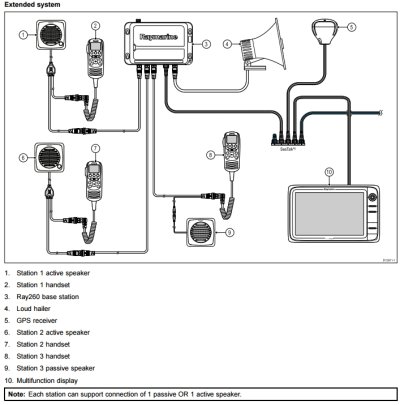MichaelB1969
Guru
- Joined
- Oct 15, 2016
- Messages
- 679
- Location
- USA
- Vessel Name
- Speedy Charlotte
- Vessel Make
- Beneteau Swift Trawler 44
Ok, not only am a newbie in terms of boat ownership, but I know even less about troubleshooting electronics. That said, I was always the guy that helped everyone hook up their stereo equipment, so there's hope. 
Anyway, I have a Ray260 with a lower and upper station (handset). Both stations have the Raymarine passive speaker connected. The lower helm station works fine. The upper does not.
I was about to place an order for a replacement speaker for $59. However, before I do that I though it would make more sense to first test the connection to see if there is a signal.
The passive speaker connects via an RCA connector. And the speaker since it is passive and not amplified, is getting power through the connector RCA connection.
How would I go about testing the connection? I don't even own a meter of any sort, so would need to purchase one, which I'd imagine is going to be very handy to have on the boat.
Thanks!
Mike
Anyway, I have a Ray260 with a lower and upper station (handset). Both stations have the Raymarine passive speaker connected. The lower helm station works fine. The upper does not.
I was about to place an order for a replacement speaker for $59. However, before I do that I though it would make more sense to first test the connection to see if there is a signal.
The passive speaker connects via an RCA connector. And the speaker since it is passive and not amplified, is getting power through the connector RCA connection.
How would I go about testing the connection? I don't even own a meter of any sort, so would need to purchase one, which I'd imagine is going to be very handy to have on the boat.
Thanks!
Mike



